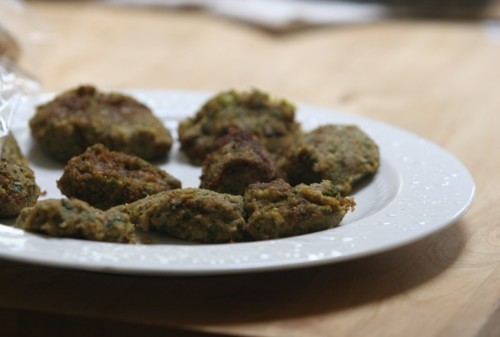In our elementary school the third grade students’ social studies section has them learning about other countries. How one teacher does this can differ slightly (while still sticking within the curriculum) from other teachers. My middle son is lucky enough to have the same teacher my eldest son had two years ago. Each month the students in her class learn about a different country: its geography, political system, some history, language(s), culture, etc. 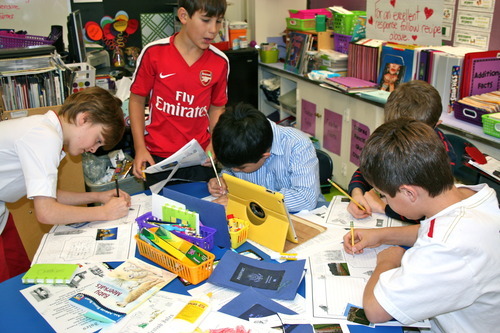 She chooses the countries based on family involvement. Parents, grandparents, nannies, etc will come in and share stories, photos, personal experiences, songs, etc. And at the end of each month she has a “Day in ____” with the kids dressing up in that country’s traditional clothes, sports shirts, colors of its flag, or something else representative of it.
She chooses the countries based on family involvement. Parents, grandparents, nannies, etc will come in and share stories, photos, personal experiences, songs, etc. And at the end of each month she has a “Day in ____” with the kids dressing up in that country’s traditional clothes, sports shirts, colors of its flag, or something else representative of it. 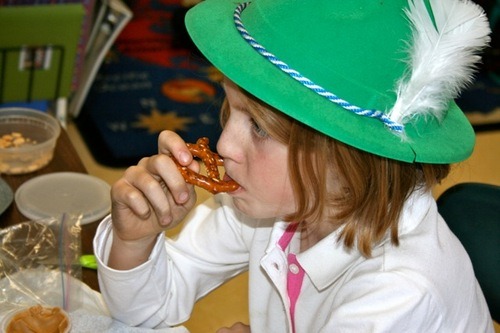 This year as in two years ago, the teacher has me organize parents to bring in food and drinks for the students to taste. It’s a great way for them to learn about the countries and cultures and also get them to try something new.
This year as in two years ago, the teacher has me organize parents to bring in food and drinks for the students to taste. It’s a great way for them to learn about the countries and cultures and also get them to try something new. 
Every child in the class must taste each item (we take into consideration allergies before comprising the list of foods) regardless of whether they think they like it. They don’t have to finish it, just taste it. And the teacher tastes with them… even her least favorite foods (fish/seafood). (She was not too fond of the pickled herring for Sweden) Then she has different kids describe what they taste – salty, savory, mild, strong, tart, bitter, spicy, etc. She’ll ask them what it reminds them of; what is the texture like; would they eat it again if given the chance; and other questions that get them thinking. The child who brought in the item gets to tell the class what it’s made of, if they know, or where they bought it (in the case of soft drinks, candies, etc). Manners/eating customs can be relevant too. Last month they had a Day in the UK where they were instructed on how to sit, use their napkin, stir their tea.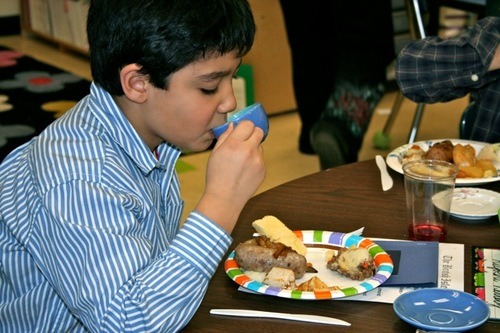
There is no rushing through the food. They take quite a long time analyzing each item. Some months there are a ton of foods to try. Whereas some months can be lean—like October when Hurricane Sandy interrupted our lives and hampered many people’s ability to cook. Some months the food is similar to what we already eat daily (UK, Italy, Germany). I’m really excited to learn about Namibia and its food in a couple of months. My eldest had Madagascar as his most exotic location, which taught us parents a few things too.
One of my favorite outcomes of the tastings is that it really opens up new possibilities for picky eaters. Because everyone must taste every item and the teacher makes her preferences known it works well for those who’d never eat those types of foods at home or in the cafeteria. I have seen the fussiest eaters pleasantly surprised at their new found love of different foods and actually trying something they previously would have steered clear of.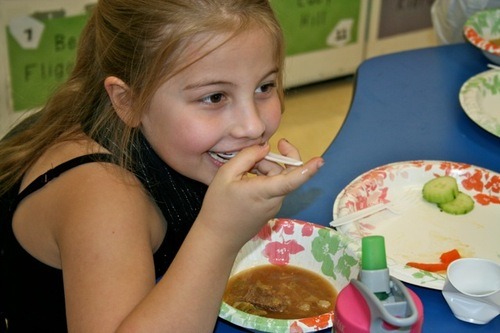
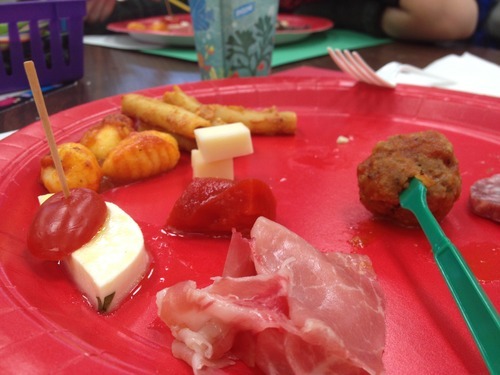
Since I organize it each month, I try to make sure they’re not overloaded in desserts and candies. I give suggestions on foods and provide links to recipes too. And when the parents who volunteer come in and see for themselves what the children are doing/learning, they have a new appreciation of their child’s teacher and school. Plus they may have a new dish to add to their rotation. It’s gotten me to experiment with recipes I’d never heard of or would have felt intimidated to attempt before. It’s opened up the world to all of us.
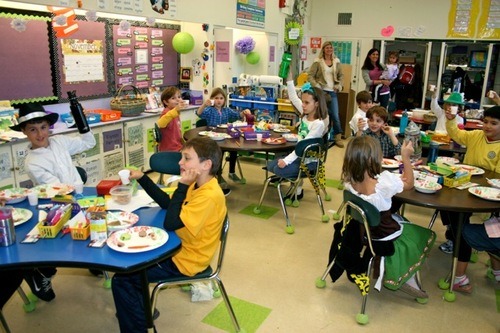
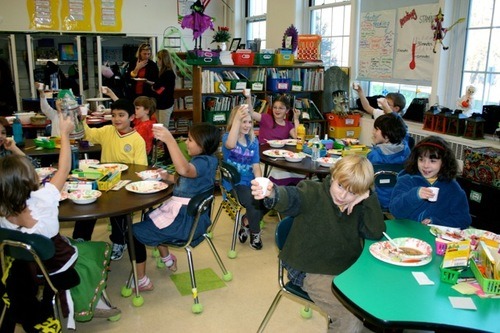
This was published on Jamie Oliver’s Food Revolution site.






